
Naples: The Soul of Southern Italy
Discover Naples, a city where history, culture, and culinary delights converge along the stunning Tyrrhenian coastline. Experience the true essence of Southern Italy.
Naples, or Napoli as the locals call it, is a bustling city that captures the true spirit of Southern Italy. Nestled on the western coast, it offers stunning views of the Tyrrhenian Sea. The city is rich in history, culture, and culinary delights, making it a must-visit destination for any traveler. Wander through the narrow streets of the historic center, a UNESCO World Heritage site, and you'll be transported back in time. The city is home to numerous churches, including the grand Naples Cathedral. Don't miss the chance to explore the underground catacombs and ancient ruins that give a glimpse into Naples' storied past. Naples is also the birthplace of pizza, and no visit is complete without savoring an authentic Neapolitan pizza. The vibrant food scene extends beyond pizza, with local markets offering fresh seafood, pasta, and pastries. Dining in Naples is an experience in itself, with street vendors and family-run trattorias at every corner. For art lovers, the city boasts impressive museums and galleries. The National Archaeological Museum houses one of the most extensive collections of Greek and Roman artifacts. If you prefer contemporary art, head to the Madre Museum for a modern twist. Naples serves as a great base for exploring nearby attractions like Pompeii, the Amalfi Coast, and the islands of Capri and Ischia. With its unique blend of history, culture, and gastronomy, Naples promises an unforgettable Italian adventure.
Local tips in Naples
- Visit the Naples Cathedral early in the morning to avoid crowds.
- Try the local street food, especially the 'sfogliatella' pastry.
- Use public transport or walk, as driving in Naples can be challenging.
- Take a guided tour of the underground ruins for a unique perspective.
- Reserve tickets in advance for popular attractions like the National Archaeological Museum.
- Plan a day trip to Pompeii or the Amalfi Coast for a change of scenery.
- Be mindful of pickpockets, especially in crowded areas.
Neighbourhoods in Naples
Naples: The Soul of Southern Italy
Naples, or Napoli as the locals call it, is a bustling city that captures the true spirit of Southern Italy. Nestled on the western coast, it offers stunning views of the Tyrrhenian Sea. The city is rich in history, culture, and culinary delights, making it a must-visit destination for any traveler. Wander through the narrow streets of the historic center, a UNESCO World Heritage site, and you'll be transported back in time. The city is home to numerous churches, including the grand Naples Cathedral. Don't miss the chance to explore the underground catacombs and ancient ruins that give a glimpse into Naples' storied past. Naples is also the birthplace of pizza, and no visit is complete without savoring an authentic Neapolitan pizza. The vibrant food scene extends beyond pizza, with local markets offering fresh seafood, pasta, and pastries. Dining in Naples is an experience in itself, with street vendors and family-run trattorias at every corner. For art lovers, the city boasts impressive museums and galleries. The National Archaeological Museum houses one of the most extensive collections of Greek and Roman artifacts. If you prefer contemporary art, head to the Madre Museum for a modern twist. Naples serves as a great base for exploring nearby attractions like Pompeii, the Amalfi Coast, and the islands of Capri and Ischia. With its unique blend of history, culture, and gastronomy, Naples promises an unforgettable Italian adventure.
When is the best time to go to Naples?
Iconic landmarks you can’t miss
Piazza del Plebiscito
Explore the grandeur of Piazza del Plebiscito in Naples, a majestic square rich in history and culture, surrounded by stunning architecture.

The Sansevero Chapel
Explore the Sansevero Chapel in Naples, a breathtaking Baroque masterpiece featuring stunning sculptures and rich historical intrigue.

Ovo Castle
Discover the allure of Ovo Castle in Naples, a historic fortress with stunning views and rich cultural significance.

National Archaeological Museum of Naples
Explore the National Archaeological Museum of Naples, a cultural gem showcasing Greco-Roman artifacts and breathtaking art in the heart of Naples.
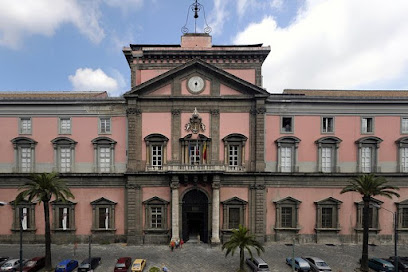
Castel Nuovo
Experience the grandeur of Castel Nuovo, a historic castle in Naples, with stunning views and rich cultural heritage.

Castel Sant'Elmo
Experience the stunning views and rich history at Castel Sant'Elmo, a historic fortress and museum in the heart of Naples, Italy.

Underground Naples
Explore the hidden history of Naples in its captivating underground tunnels, showcasing ancient structures, aqueducts, and tales of resilience.

Duomo di Napoli
Explore the breathtaking Duomo di Napoli, a stunning Gothic and Baroque cathedral filled with rich history and cultural significance in the heart of Naples.

Chiesa del Gesù Nuovo
Explore the stunning Baroque architecture and rich history of Chiesa del Gesù Nuovo, a must-visit landmark in Naples that enchants every visitor.

Catacombs of San Gennaro
Explore the Catacombs of San Gennaro, a profound historical and cultural landmark in Naples, featuring stunning frescoes and ancient burial sites.

Royal Palace of Naples
Explore the opulent Royal Palace of Naples, a stunning Baroque masterpiece and a gateway to the rich history of the Neapolitan monarchy.

Napoli Sotterranea Guided Authorized Tour
Discover the enchanting underground world of Napoli Sotterranea, a historical gem in Naples revealing centuries of rich heritage and captivating stories.

Galleria Umberto I
Explore the breathtaking Galleria Umberto I in Naples, a historic landmark combining stunning architecture with a vibrant shopping experience.

Catacombe di San Gaudioso
Discover the haunting beauty of the Catacombe di San Gaudioso in Naples, where history, art, and spirituality intertwine in an unforgettable underground experience.
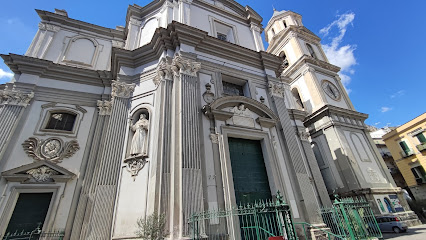
Piazza Nazionale
Explore the vibrant history and stunning architecture of Piazza Nazionale, a cultural gem in the heart of Naples, Italy.

Unmissable attractions to see
Amalfi Coast
Experience the breathtaking beauty and rich culture of the Amalfi Coast, Italy’s premier scenic destination for tourists seeking stunning views and culinary delights.

Archaeological Park of Pompeii
Explore the ancient wonders of Pompeii, a UNESCO World Heritage site, where history comes alive amidst the ruins of a once-thriving Roman city.

Royal Palace of Caserta
Explore the Royal Palace of Caserta, a UNESCO World Heritage Site showcasing baroque architecture, stunning gardens, and rich cultural heritage in Italy.

Sansevero Chapel Museum
Discover the breathtaking artistry and rich history of Sansevero Chapel Museum in Naples, home to the iconic Veiled Christ and stunning Baroque sculptures.
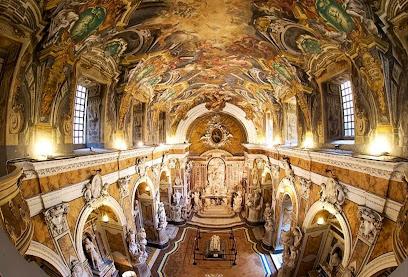
Ovo Castle
Discover the historical charm and breathtaking views of Ovo Castle, the oldest fortress in Naples, steeped in rich heritage and architectural beauty.

Vesuvius National Park
Experience the breathtaking beauty and historic significance of Vesuvius National Park, a natural wonder in the heart of Italy.

Museo Archeologico Nazionale di Napoli
Explore ancient civilizations at the National Archaeological Museum of Naples, home to unparalleled artifacts from Pompeii and Roman history.

Castel Sant'Elmo
Explore Castel Sant'Elmo in Naples: A stunning medieval fortress offering panoramic views, rich history, and captivating art exhibitions.

Castel Nuovo
Explore the historic Castel Nuovo in Naples, a stunning castle that showcases the city's rich heritage and architectural beauty.

Museo e Real Bosco di Capodimonte
Explore the Museo e Real Bosco di Capodimonte in Naples: a treasure trove of art, history, and stunning natural beauty awaits you.

Underground Naples
Discover the hidden depths of Naples at Underground Naples, a captivating historical site of ancient tunnels, aqueducts, and archaeological wonders.

Duomo di Napoli
Discover the grandeur of Duomo di Napoli, a masterpiece of Gothic and Baroque architecture, and a pivotal site of Naples' rich cultural and spiritual heritage.

Villa Rufolo
Discover the enchanting beauty and rich history of Villa Rufolo, a must-see landmark in the stunning town of Ravello, Italy.

Chiesa del Gesù Nuovo
Discover the baroque beauty and historical significance of Chiesa del Gesù Nuovo, a must-visit church in the heart of Naples.

Complesso Monumentale di Santa Chiara
Discover the architectural beauty and serene gardens of the Complesso Monumentale di Santa Chiara in Naples, a must-see for every traveler.

Essential places to dine
Tandem - Via Paladino
Experience authentic Neapolitan cuisine at Tandem - a must-visit restaurant in Naples offering delicious traditional dishes.

La Lazzara Trattoria e Pizzeria
Discover authentic Italian flavors at La Lazzara Trattoria e Pizzeria, where traditional recipes meet fresh ingredients in the heart of Naples.

Mimì alla Ferrovia
Experience authentic Neapolitan cuisine at Mimì alla Ferrovia—where tradition meets flavor in every dish.
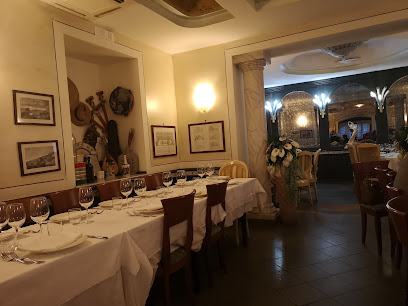
Osteria Il Gobbetto
Experience authentic Neapolitan cuisine at Osteria Il Gobbetto—where traditional flavors meet warm hospitality in the heart of Naples.

La Locanda Gesù Vecchio
Experience authentic Neapolitan flavors at La Locanda Gesù Vecchio – where tradition meets passion in every dish.

Trattoria Don Vincenzo
Experience authentic Neapolitan cuisine at Trattoria Don Vincenzo in Naples - where every dish tells a story.

Osteria Da Antonio
Experience authentic Italian flavors at Osteria Da Antonio in Naples - where fresh seafood meets tradition in every dish.

A Cucina Ra Casa Mia
Experience authentic Neapolitan cuisine at A Cucina Ra Casa Mia - where traditional flavors meet warm hospitality in the heart of Naples.

Januarius
Discover authentic Neapolitan flavors at Januarius, where traditional recipes meet fresh ingredients in a warm and inviting atmosphere.

Re Lazzarone
Discover authentic Neapolitan cuisine at Re Lazzarone, where tradition meets taste in every delicious dish.

Palazzo Petrucci Ristorante
Experience exquisite fine dining at Palazzo Petrucci Ristorante with breathtaking views over Naples Bay.

La Taverna di Santa Chiara
Savor authentic Neapolitan cuisine in a cozy setting at La Taverna di Santa Chiara in Naples - where every meal tells a story.

Baccalaria
Experience the best seafood dishes at Baccalaria in Naples - where tradition meets exquisite Mediterranean flavors.

Ristorante Amici Miei
Discover authentic Italian flavors at Ristorante Amici Miei in Naples - where every dish tells a story.

'A Lucianella
Experience authentic Italian cuisine at A Lucianella in Naples – where tradition meets flavor in every dish.
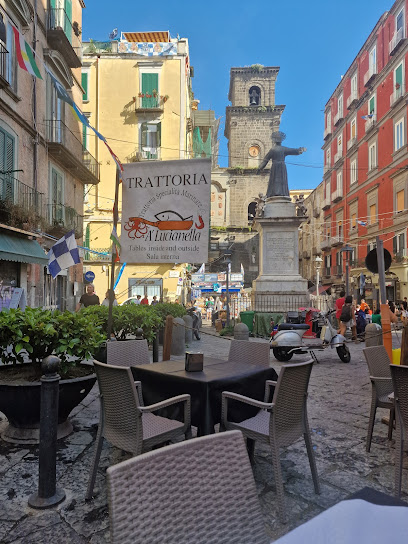
Markets, malls and hidden boutiques
Galleria Umberto I
Explore the architectural marvel of Galleria Umberto I, a historic shopping mall in Naples, blending shopping, culture, and stunning beauty.

London Store Napoli
Explore the vibrant fashion scene at London Store Napoli, where style meets culture in the heart of Naples, Italy.

Galleria Principe di Napoli
Discover the elegance of Galleria Principe di Napoli, a historical shopping mall blending rich culture, exquisite shops, and delightful dining in Naples.

Shopping Gallery of Piazza Garibaldi
Discover the Shopping Gallery of Piazza Garibaldi - Naples' vibrant retail haven featuring a rich blend of shops and local cuisine in a historic setting.

San Shop Luxury
Explore San Shop Luxury in Naples for a premium selection of clothing for men, women, and children, blending contemporary design with Italian flair.

Flying Tiger Copenhagen
Explore the colorful and quirky gift shop Flying Tiger Copenhagen in Naples, where unique finds and delightful souvenirs await every visitor.

'A Curreia
Explore 'A Curreia', Naples' exquisite leather goods store offering artisanal craftsmanship and stylish accessories, perfect for every fashion lover.
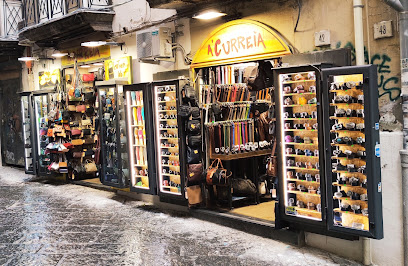
NapoliMania
Explore NapoliMania for authentic souvenirs and clothing that reflect the vibrant culture of Naples, Italy.

POP 21 VINTAGE STORE
Explore POP 21 Vintage Store in Naples for a curated collection of unique vintage clothing that captures the essence of timeless fashion.

Retrophilia Vintage Clothing
Uncover timeless treasures at Retrophilia Vintage Clothing in Naples, where every piece tells a story and fashion history comes alive.

Oblomova
Discover the essence of Naples fashion at Oblomova, where vintage meets contemporary in a stylish clothing store filled with unique finds.

Boutique Galiano Napoli - Abbigliamento e accessori uomo/donna
Explore Boutique Galiano in Naples for a unique selection of men's and women's fashion and accessories that capture the essence of Italian elegance.

Boudoir Boutique
Explore the eclectic fashion offerings of Boudoir Boutique in Naples, where style meets local charm in a delightful shopping experience.

Nel Cuore di Napoli
Explore exquisite handmade souvenirs and authentic Neapolitan crafts at Nel Cuore di Napoli, a gem in the heart of Naples.

HEM
Explore the charm of vintage fashion at HEM in Naples, where unique styles and rich Italian history blend beautifully.

Essential bars & hidden hideouts
Cammarota Spritz
Discover the lively ambiance of Cammarota Spritz, Naples' favorite bar and night club, where vibrant nightlife and authentic cocktails await.
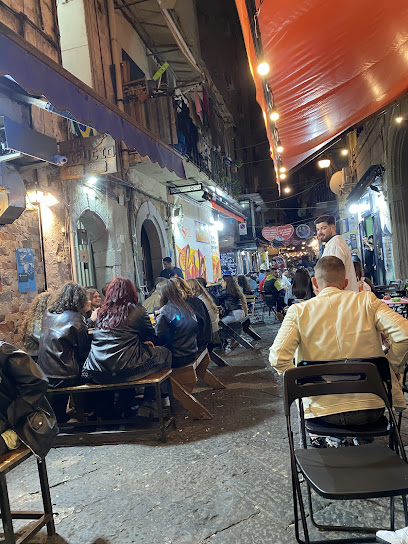
Shanti Art Musik Bar
Experience the lively vibe of Shanti Art Musik Bar in Naples, where art, music, and cocktails come together for an unforgettable night out.
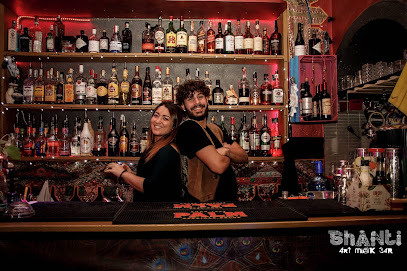
OAK Napoli Wine And Craft Beer
Discover the finest wines and craft beers at OAK Napoli, where Italian beverage culture comes alive in a cozy and inviting setting.

L'Antiquario
Discover the vibrant cocktail culture of Naples at L'Antiquario, where innovative mixology meets an inviting atmosphere.

'O Barett
Discover the lively bar scene at 'O Barett, a popular spot in Naples known for its delicious cocktails and vibrant nightlife.

Archeobar - Negroneria Napoletana
Experience the vibrant nightlife of Napoli at Archeobar, where expertly crafted cocktails meet a lively ambiance.

Pepi Vintage Room
Discover the vibrant Pepi Vintage Room in Naples, where exquisite cocktails meet a unique vintage atmosphere and live music.

Bucopertuso - Public House
Discover the vibrant atmosphere of Bucopertuso in Naples, a public house renowned for its craft beers, cocktails, and welcoming ambiance.

Spuzzulè Winebar
Discover the enchanting Spuzzulè Winebar in Naples, where exquisite wines and delightful cuisine merge in a cozy atmosphere.

BEER BAR
Discover the lively ambiance of Beer Bar in Naples, where a diverse selection of local and international beers awaits every enthusiast.
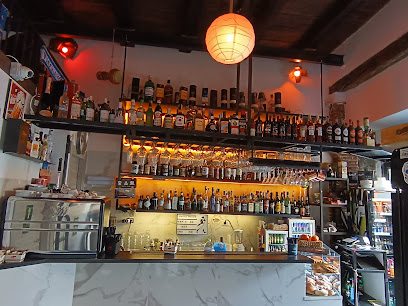
La Fesseria - Street Bar
Experience Naples' vibrant nightlife at La Fesseria, where innovative cocktails and a lively atmosphere come together for an unforgettable evening.

Ba - Bar
Discover Ba - Bar, a lively Naples hotspot blending traditional charm with modern flair for an unforgettable night out.

Bar Lemmelemme
Discover the lively ambiance of Bar Lemmelemme in Naples, where local culture meets modern charm in the heart of the city.

Saint James Pub Bistrot Rhumerie
Discover the vibrant spirit of Naples at Saint James Pub Bistrot Rhumerie, where local flavors and a lively atmosphere await.

Happening cocktail bar
Experience the vibrant nightlife of Naples at Happening Cocktail Bar, where inventive cocktails and a lively atmosphere await.

Travel experiences inspired by this city
Explore more travel diariesLocal Phrases
-
- HelloCiao
[chow] - GoodbyeArrivederci
[ah-ree-veh-dehr-chee] - YesSì
[see] - NoNo
[noh] - Please/You're welcomePer favore/Prego
[pehr fah-voh-reh/preh-goh] - Thank youGrazie
[grah-tsyeh] - Excuse me/SorryScusa/Scusami
[skoo-sah/skoo-sah-mee] - How are you?Come stai?
[koh-meh stai] - Fine. And you?Bene. E tu?
[beh-neh/ay too] - Do you speak English?Parli inglese?
[pahr-lee een-gleh-zeh] - I don't understandNon capisco
[non kah-pee-skoh]
- HelloCiao
-
- I'd like to see the menu, pleaseVorrei vedere il menù, per favore
[vohr-ray veh-deh-reh eel meh-noo, pehr fah-voh-reh] - I don't eat meatNon mangio carne
[non mahn-joh kahr-neh] - Cheers!Salute!
[sah-loo-teh] - I would like to pay, pleaseVorrei pagare, per favore
[vohr-ray pah-gah-reh, pehr fah-voh-reh]
- I'd like to see the menu, pleaseVorrei vedere il menù, per favore
-
- Help!Aiuto!
[ah-yoo-toh] - Go away!Vattene!
[vaht-teh-neh] - Call the Police!Chiama la Polizia!
[kyah-mah lah poh-lee-tsyah] - Call a doctor!Chiama un dottore!
[kyah-mah oon doh-toh-reh] - I'm lostMi sono perso/a
[mee soh-noh pehr-soh/ah] - I'm illSto male
[stoh mah-leh]
- Help!Aiuto!
-
- I'd like to buy...Vorrei comprare...
[vohr-ray kohm-prah-reh] - I'm just lookingSto solo guardando
[stoh soh-loh gwahr-dahn-doh] - How much is it?Quanto costa?
[kwan-toh koh-stah] - That's too expensiveÈ troppo caro
[eh troh-poh kah-roh] - Can you lower the price?Puoi abbassare il prezzo?
[pwah-ee ahb-bah-sah-reh eel preh-tsoh]
- I'd like to buy...Vorrei comprare...
-
- What time is it?Che ora è?
[keh oh-rah eh] - It's one o'clockÈ l'una
[eh loo-nah] - Half past (10)Sono le dieci e mezzo
[soh-noh leh dee-eh-chee eh meh-tsoh] - MorningMattina
[maht-tee-nah] - AfternoonPomeriggio
[poh-meh-ree-joh] - EveningSera
[seh-rah] - YesterdayIeri
[yeh-ree] - TodayOggi
[oh-jee] - TomorrowDomani
[doh-mah-nee] - 1Uno
[oo-noh] - 2Due
[doo-eh] - 3Tre
[treh] - 4Quattro
[kwah-troh] - 5Cinque
[cheen-kweh] - 6Sei
[say] - 7Sette
[seht-teh] - 8Otto
[oh-toh] - 9Nove
[noh-veh] - 10Dieci
[dee-eh-chee]
- What time is it?Che ora è?
-
- Where's a/the...?Dov'è...?
[doh-veh] - What's the address?Qual è l'indirizzo?
[kwal eh leen-dee-ree-tsoh] - Can you show me (on the map)?Puoi mostrarmi (sulla mappa)?
[pwah-ee mohs-trar-mee (sool-lah mahp-pah)] - When's the next (bus)?Quando passa il prossimo (autobus)?
[kwan-doh pahs-sah eel prohs-see-moh (ow-toh-boos)] - A ticket (to ....)Un biglietto (per ....)
[oon beel-lyet-toh (pehr)]
- Where's a/the...?Dov'è...?
History of Naples
-
Naples, originally named Neapolis, meaning 'New City' in Greek, was founded around the 6th century BCE by settlers from the Greek colony of Cumae. The city's strategic location and natural harbor made it a key center for trade and culture in the ancient world. Greek influence is still evident today in Naples' ancient ruins, street layouts, and even the local dialect.
-
After the Greeks, Naples came under Roman control in 326 BCE. The city flourished as a part of the Roman Empire, becoming a vital cultural and commercial hub. Many Roman structures, such as aqueducts, theaters, and temples, were built during this period, some of which can still be explored today, including the remnants of the Roman theater beneath the modern city.
-
Following the fall of the Roman Empire, Naples became an independent duchy in the early Middle Ages, around the 8th century. The city managed to maintain a degree of independence and prosperity despite the tumultuous period marked by invasions and power struggles. The medieval period saw the construction of significant structures such as Castel dell'Ovo and Castel Nuovo.
-
In the 13th century, Charles I of Anjou conquered Naples, establishing the Angevin dynasty. This period was marked by significant architectural and cultural development, including the construction of the Gothic Cathedral of Naples. Later, in the 15th century, the city came under the rule of the Aragonese dynasty, which further enriched Naples' cultural and artistic heritage.
-
From the early 16th century until the early 18th century, Naples was part of the Spanish Empire and served as the capital of the Spanish Viceroyalty of Naples. This era brought both prosperity and hardship. The city experienced significant urban development, with the construction of palaces, churches, and public buildings, but also suffered from social unrest and plagues.
-
In the 18th century, Naples became a center of Enlightenment thought under the Bourbon kings. Charles III and his successors implemented numerous reforms, modernizing the city's infrastructure, economy, and cultural institutions. The Royal Palace of Naples, the Teatro di San Carlo, and the Capodimonte Palace are lasting monuments from this era.
-
In 1861, Naples became part of the newly unified Kingdom of Italy. The city underwent significant changes as it integrated into the modern Italian state, experiencing both industrialization and social challenges. Despite these upheavals, Naples retained its unique cultural identity and continued to be a vibrant center of art, music, and cuisine.
-
Naples faced considerable hardship during World War II, suffering extensive bombing by Allied forces. After the war, the city underwent a period of reconstruction and economic revival. The post-war years were marked by significant urban expansion and a renewed focus on cultural and historical preservation, leading to the Naples we know today.
-
Today, Naples is a bustling metropolis that seamlessly blends its rich historical heritage with modern life. It is renowned for its vibrant street life, stunning architecture, and culinary traditions, particularly the world-famous Neapolitan pizza. The city's historic center is a UNESCO World Heritage Site, reflecting its enduring significance and beauty.
Naples Essentials
-
Naples is well-connected by air, rail, and road. Naples International Airport (Aeroporto di Napoli-Capodichino) is the main airport, serving numerous European and international destinations. From the airport, you can reach the city center by taxi, bus, or the Alibus shuttle service. Alternatively, Naples is accessible by train, with Napoli Centrale being the main railway station, offering connections to major Italian cities like Rome, Milan, and Florence. If you prefer driving, the city is connected by major highways such as the A1 and A3.
-
Naples has an extensive public transportation network, including buses, trams, metro, and funiculars. The metro system consists of two main lines: Line 1 (the yellow line) and Line 2 (the blue line). Tickets can be purchased at stations, newsstands, and tobacco shops. Taxis are also available but ensure the meter is running or agree on a fare beforehand. For an authentic experience, consider using the funiculars to navigate the hilly terrain. Additionally, renting a scooter can be an adventurous way to explore the city.
-
The official currency in Naples is the Euro (EUR). Credit and debit cards are widely accepted in hotels, restaurants, and shops, but it's advisable to carry some cash for smaller establishments and local markets. ATMs are plentiful throughout the city. Be aware of potential foreign transaction fees and notify your bank of your travel plans to avoid any issues with card usage.
-
Naples is generally safe for tourists, but like any large city, it has areas with higher crime rates, particularly for petty crimes such as pickpocketing. Be cautious in crowded places like Piazza Garibaldi, the area around Napoli Centrale station, and tourist hotspots like Spaccanapoli and the Spanish Quarter. Avoid displaying valuables and be vigilant with your belongings. Stick to well-lit, populated areas at night and consider using taxis for late-night travel.
-
In case of emergency, dial 112, the European emergency number, for police, fire, or medical assistance. Naples has several hospitals and emergency clinics, including Ospedale Cardarelli and Ospedale dei Pellegrini. Pharmacies are widely available and can provide over-the-counter medications. It is recommended to have travel insurance that covers medical emergencies.
-
Fashion: Do dress stylishly but comfortably. Italians appreciate good fashion, so avoid overly casual attire in public places. Religion: Do respect religious sites by dressing modestly and covering shoulders and knees when visiting churches. Public Transport: Do validate your ticket before boarding and be aware of pickpockets. Don't eat or drink on public transport. Greetings: Do greet people with a 'buongiorno' (good morning) or 'buonasera' (good evening). A handshake is common, but close friends may kiss on both cheeks. Eating & Drinking: Do try the local cuisine, including pizza and espresso. Don't ask for modifications to traditional dishes as it may be considered disrespectful.
-
To experience Naples like a local, explore the less touristy neighborhoods such as Vomero and Chiaia, where you can find charming cafes and boutiques. Visit local markets like Mercato di Porta Nolana for fresh produce and seafood. Engage with locals, who are often friendly and passionate about their city. Don't miss the opportunity to take a leisurely stroll along the Lungomare, Naples' scenic waterfront promenade, especially at sunset.
Trending Landmark in Naples
-
Piazza del Plebiscito
-
The Sansevero Chapel
-
Ovo Castle
-
National Archaeological Museum of Naples
-
Castel Nuovo
-
Castel Sant'Elmo
-
Underground Naples
-
Duomo di Napoli
-
Chiesa del Gesù Nuovo
-
Catacombs of San Gennaro
-
Royal Palace of Naples
-
Napoli Sotterranea Guided Authorized Tour
-
Galleria Umberto I
-
Catacombe di San Gaudioso
-
Piazza Nazionale
Nearby Cities to Naples
-
Things To Do in Herculaneum
-
Things To Do in Pompeii
-
Things To Do in Sorrento
-
Things To Do in Positano
-
Things To Do in Capri
-
Things To Do in Ravello
-
Things To Do in Amalfi
-
Things To Do in Rome
-
Things To Do in St. Peter's Square
-
Things To Do in Apostolic Palace
-
Things To Do in Vatican Necropolis
-
Things To Do in St. Peter's Basilica
-
Things To Do in Sistine Chapel
-
Things To Do in Gregorian Etruscan Museum
-
Things To Do in Vatican Museums




























